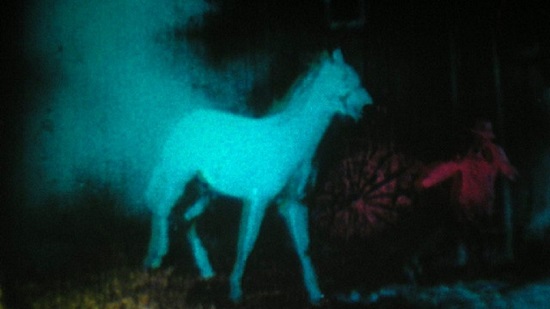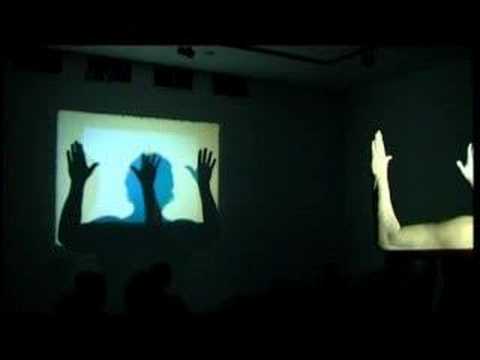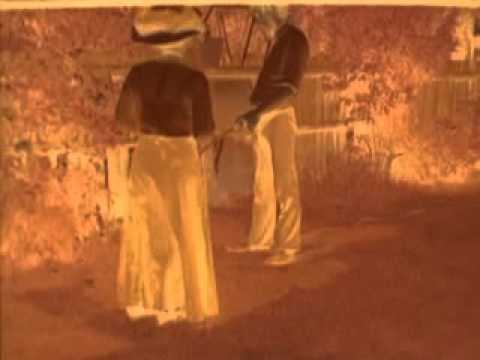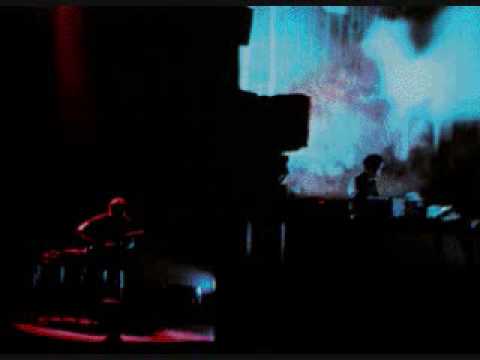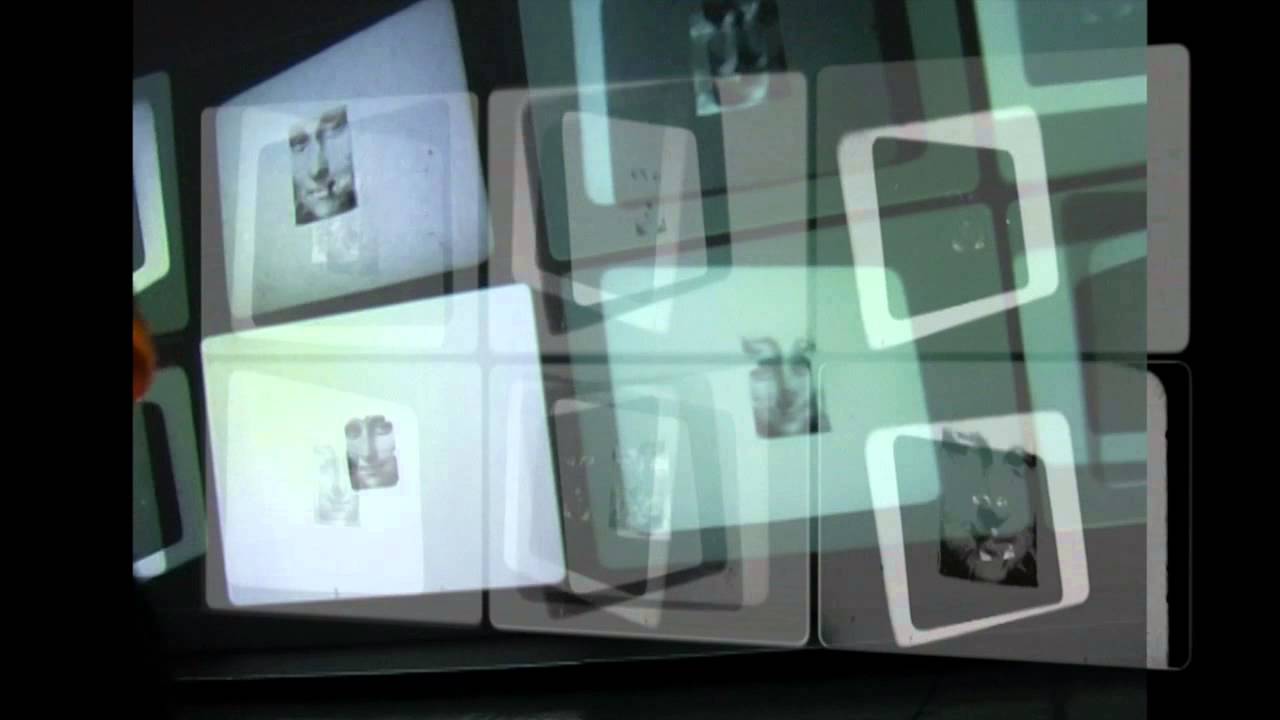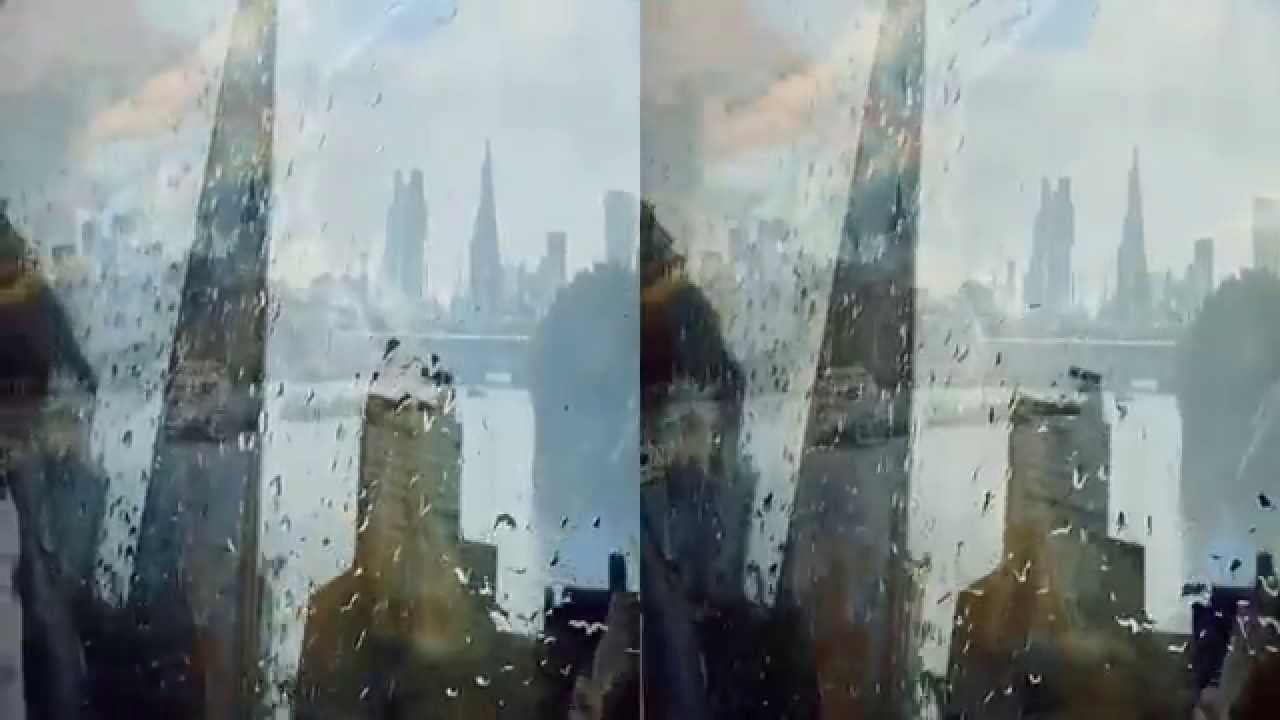Malcolm Le Grice’s films, which are the subject of a season at BFI Southbank this May, rework and re-wire cinematic history, yet he began making films in the 1960s using the detritus and refuge of the Soho film industry. He bin-dived, rescuing long-strips of acetate film and thereafter layering and splicing them together in loops and jarring combinations, also introducing colour and experimental sound. Castle One (1966) was an aggressive sci-fi assault on the advertising industry and industrial power, and was proto-punk and surrealistic. Strange combinations of images and broken words call out for – and yet refute – resolution whilst a flickering lightbulb hanging in front of the screen was turned on and off at different intervals, sometimes chiming with the images on screen, sometimes not. The early films were junk-art inspired and sought to find cracks in conventional cinematic language and presentation.
Le Grice was informed by jazz and painting and his work occluded and avoided narrative, whilst also twisting film history into peculiar shapes and directions. He has been making films for over 50 years now and worked with all manner of different technologies. So let’s re-wrangle his films and come at them from the perspective of cinema history. In the beginning was the word, or rather the image, silent and barren. And before that was the shadow play – figures moving with projected light:
Shadow Play
Horror Film (1971): Le Grice’s figure moves slowly back towards three projectors, each one playing a different 16mm loop of pure colour also pulsing and creating a mixed interplay of rhythms whilst the filmmaker appears to literally hold the image in his outstretched arms, sometimes appearing like Leonardo Da Vinci’s ‘Vitruvian Man’. This is indeed the stuff of pre-cinema, shadows and silhouettes creating phantasmagoria. Slow heavy breathing played during the performance also cranks-up the tension, twisting it to something different to the Sixties psychedelic light show performances from which it would have at least partially evolved. Le Grice stands and moves between the screen and the projectors, marking out the dynamics of the room and highlighting theatrical space and the whole cinematic event. The piece is performed regularly and yet the energy within it is still latent – it’s uncanny and strange.
Early Cinema
The films of early cinema are almost like legends or myths now, and its methods and symbols have seeped into our unconscious. After Lumière – L’Arroseur Arrose (1974) by Le Grice picks apart one of early cinema’s classic and frequently re-made works. In Le Grice’s version the act of the gardener being distracted by his lady mistress and then getting soaked by his hose and a young urchin is re-formatted and repeated four times. Early cinema and experimental film can be remarkably similar, a point not lost on people when early films began to shown more frequently towards the end of the 1970s. Here Le Grice highlights film language by emphasizing the film format, the spatial dynamics of the narrative and curiously the class relationships here too.
Early cinema would quickly find place in Le Grice’s pool of references. His classic Berlin Horse (1970) (which includes a unique soundtrack by Brian Eno) works in the manipulated loop of early British film The Burning Barn (1900). In Le Grice’s version, the horse escaping fire weaves in and out of richly saturated Super 8 images of another horse performing in Germany, both sequences further manipulated through optical printing and the mixing of colour, Le Grice’s innate lyricism and musicality very much in action. A version of it was performed when he toured with Eno and Robert Fripp in 1975:
The Mobile Show
Early filmmakers and inventors– from the Lumières to Edison to the British R. W. Paul and Birt Acres – all invariably shot, processed and projected their own work. In some cases the camera was re-formatted and also used as a projector. A filmmaker was simultaneously an inventor, a technician and a performer, and they also went on the road, showing their wares in circuses and fairgrounds. Cinemas as we now understand them didn’t even exist until several years into the filmmaking period. Le Grice and his contemporaries at the London Filmmakers’ Co-operative, which was founded in 1966 and became active as a multi-disciplinary space a few years later, worked in a similar way. Le Grice, in fact, designed and built unusual film printing equipment and was key in making the Co-op what it was. He did all the above and as a matter of course continually re-wired the cinematic space, showing films in different ways. As well as his shadow plays, he used multiple projectors, often overlapping images that moved between figuration and abstraction. Films could be shown single screen, double-screen and even triple screen, as is the case with Threshold (1972), its bright red and green flared images and complex multi-layered printing seem to continually interlock and then fall apart. It was as though the films became made at the point of projection. Le Grice is no film purist and today travels with an i-pad and his archive drive, a large of amount of films accessible there as mpeg4s ready to be played in whichever scenario he deems fit. After Leonardo (1972) has been re-worked as a giant, flexible digital collage, incorporating live camera feed and separate manipulated electronic sound.
Narrative Development
Filmmakers began to link shot and scenes together towards the 1910s, paradoxically creating shifts in perspective whilst streamlining and smoothing out the narrative. By way of contrast, in 1972, Le Grice wrote about highlighting each stage of the filmmaking process, from shooting to projection, trying to avoid illusionism, identification and emotional manipulation. He began to avoid traditional filmmaking terms and expectations and in an attempt to find a new language, borrowed words from other spheres, talking about ‘dramaturgy’ and ‘inputs’ and ‘feedback’. Astrid Proll from the Baader-Meinhof/Red Army Faction group in Germany said that real counter-cultural resistance hit London in the 1970s rather than the ’60s. Experimental filmmaking certainly became more overtly hardline and oppositional as it hit the grey decade.
The Feature Film
It was surprising then when Le Grice made Blackbird Descending – Tense Alignment (1977), the first of three feature length works, and at 110mins it was over five times as long as anything he made before. It seemed to be stuck in the same loop of time within in a suburban Edwardian house, moving positions and emphasizing the quiet melancholy of repetitive domestic chores, bringing an existential quality to his refusal to develop plot, evoking both Groundhog Day (1993) and Reginald Perrin. And yet it doesn’t focus on the male in a state of mid-life crisis, rather it allows different perspectives to play their part. Two women, a child and a man all occupy the house, and each one performs a task, becoming harder to place in linear time due to the use of tape-recorders and a form of narration. It’s like a giant elliptical puzzle, and is one of this viewer’s personal favorites.
Digital
Le Grice and his contemporaries at the LFMC often focused on the limits and materiality of 16mm film in their work – it became the physical material to test and break. Camera flare was processed and coloured for Threshold (1972) and optical soundtracks were printed onto and scratched – or simply left to hiss in the case of Talla (1967). Le Grice has worked with digital for nearly 20 years and for Self-Portrait After Raban Take Measure (2008) he asked what were the limits of that format, posing the question directly and then having the piece run as long as it takes for light to travel from the sun to the earth: 8mins 20 seconds. The video presents his shadow on grass, inadvertently referencing Horror Film, that shadow play being determined by the time it takes for him to walk backwards from the screen to the projector. The films and performances are exploratory and yet primal. His other digital videos, notably the sinister Even The Cyclops Pays The Ferryman (1998) are diaristic, reflecting on memory and the image’s capacity to store emotion and sensation, reflecting and refracting everyday life.
3D
3D has been used by commercial cinema as a means of re-engaging audience with the spectacle of cinema, doing something TV and now the internet cannot easily replicate. It’s a current phenomenon but not a new one. Similarly, Le Grice explored it in the early 1970s and then again late last year, with Where When (2015) creating floating pools of diaristic images that fill out the screen and immerse the viewer in the elemental forces of nature – bright sun, rain, lapping water. The warm colours are rich and the images involving, feeling both present and yet abstracted through the mixing of different locations within the same visual field. The images are shot 2D but then placed in a virtual 3D space. Marking Time (2015) meanwhile staggered deep layers of colour, sending the viewer into a vortex of electric blues and oranges, evoking both the paintings of Rothko and Le Grice’s on-going interest/fascination/obsession with the spatial and emotional resonances of different hues. Le Grice has been critical of mainstream cinema, with its emotional manipulations, but not spectacle in its rawest, most open of forms.
The Many Mona Lisas: Malcolm Le Grice Performance Evening takes place at BFI Southbank on Friday 27 May.

